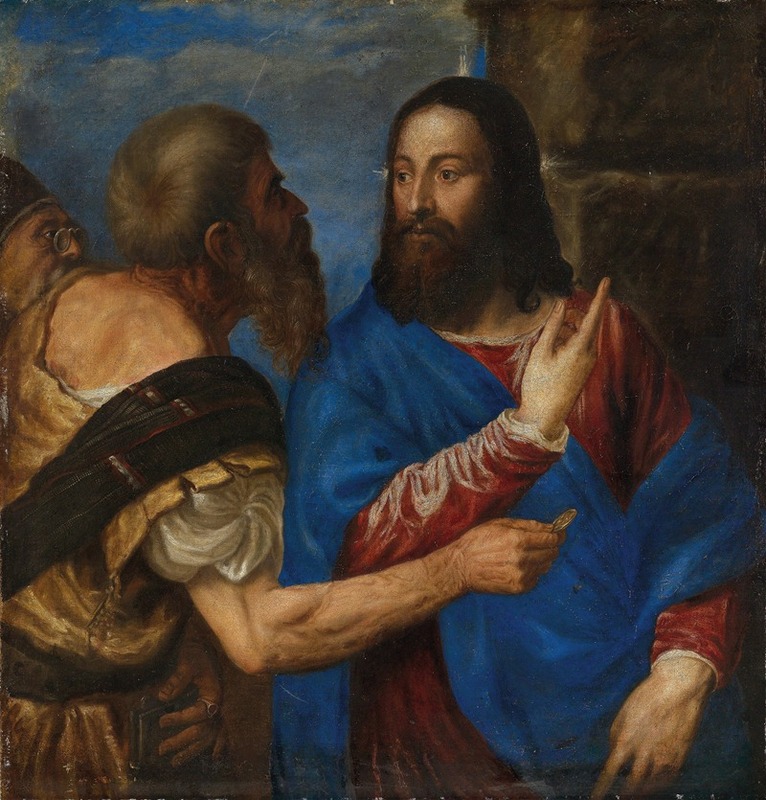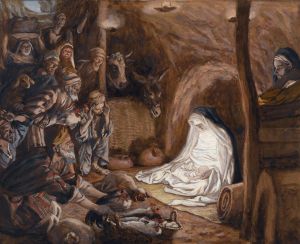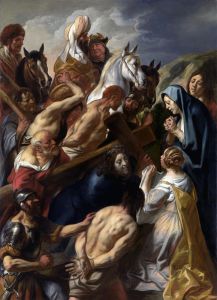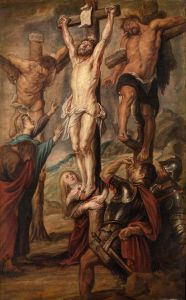
The Tribute Money
A hand-painted replica of Titian’s masterpiece The Tribute Money, meticulously crafted by professional artists to capture the true essence of the original. Each piece is created with museum-quality canvas and rare mineral pigments, carefully painted by experienced artists with delicate brushstrokes and rich, layered colors to perfectly recreate the texture of the original artwork. Unlike machine-printed reproductions, this hand-painted version brings the painting to life, infused with the artist’s emotions and skill in every stroke. Whether for personal collection or home decoration, it instantly elevates the artistic atmosphere of any space.
"The Tribute Money" is a painting by the renowned Italian Renaissance artist Titian, created around 1516. This work is an exemplary piece of Titian's early career and showcases his mastery in the use of color and composition, which would later become hallmarks of his style. The painting is housed in the Gemäldegalerie Alte Meister in Dresden, Germany.
The subject of "The Tribute Money" is derived from a biblical story found in the Gospel of Matthew (Matthew 22:15-22). The narrative depicts a moment when the Pharisees attempt to entrap Jesus with a question about the legality of paying taxes to the Roman Emperor. In response, Jesus asks them to show him a coin and inquires whose image is on it. When they answer that it is Caesar's, Jesus delivers the famous line, "Render unto Caesar the things that are Caesar's, and unto God the things that are God's." This story is often interpreted as a commentary on the relationship between religious and secular obligations.
Titian's depiction of this scene is notable for its dramatic use of light and shadow, which enhances the emotional intensity of the moment. The composition is centered around the figure of Christ, who is portrayed with a calm and authoritative demeanor. His right hand gestures towards the coin, emphasizing his response to the Pharisees. The figures surrounding Jesus are captured in various states of reaction, from skepticism to contemplation, adding a dynamic quality to the scene.
The painting is a testament to Titian's skill in rendering human emotion and interaction. His use of color is particularly striking, with rich, deep hues that bring a sense of realism and vitality to the figures. The background is kept relatively simple, allowing the focus to remain on the characters and their expressions.
Titian's "The Tribute Money" is also significant for its contribution to the development of Venetian painting during the Renaissance. At the time, Venice was a thriving center of art and culture, and Titian was at the forefront of this artistic movement. His innovative techniques and approaches to composition influenced many of his contemporaries and successors.
While "The Tribute Money" is not as widely known as some of Titian's other works, such as "Assumption of the Virgin" or "Venus of Urbino," it remains an important piece within his oeuvre. It reflects his early exploration of religious themes and his ability to convey complex narratives through art.
In summary, "The Tribute Money" by Titian is a masterful representation of a biblical story, showcasing the artist's early style and his contributions to Renaissance art. The painting's focus on human emotion, combined with Titian's skillful use of color and composition, makes it a significant work that continues to be studied and admired in the context of art history.















